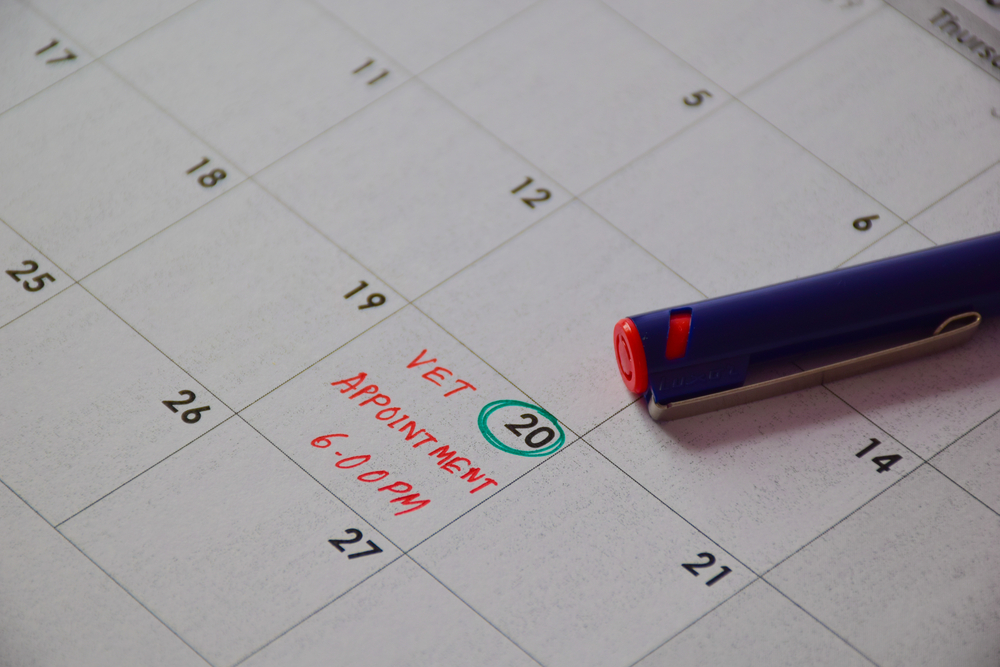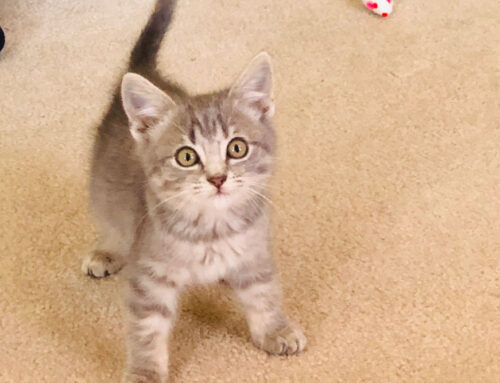If your pet needed veterinary care in the last several months, you likely were surprised at how long you had to wait to get an appointment. Many factors are contributing to the busy schedules and increased wait times seen at veterinary practices across the country. Our team at Liberty Veterinary Hospital wants to help you understand why we have been so busy.
The pandemic caused our veterinarians to be extra busy
Obviously, COVID-19 has played a major role in the increased wait times, presenting a unique, unprecedented challenge to the veterinary industry. Veterinarians weren’t able to work from home, and leaving patients without veterinary care wasn’t an option. We had to work out a strategy to see pets, while keeping our staff and pet owners safe, and one way we handled this problem was by switching to curbside appointments. However, although this decreased exposure risks for our staff and pet owners, the process was much more-time consuming than regular in-hospital appointments, and meant we could see fewer pets per day. We resorted to triaging patients, to ensure the pets who needed the most urgent care were made a priority. This required postponing elective procedures and wellness visits, to make room for these sick pets, and we are now struggling to catch up on these postponed appointments, in addition to seeing new appointments.
More pet visits contribute to our veterinarians being busy
The pandemic also brought a rise in pet appointments. Numerous factors are contributing to more pets needing veterinary care.
- Pandemic pets — When the lockdown began, many families rushed to adopt new pets to keep them company. In May 2021, the American Society of the Prevention of Cruelty to Animals (ASPCA) released new data from a national poll showing that close to one in five households had acquired a cat or dog since the COVID-19 crisis began. This number accounts for approximately 23 million households based on the United States 2019 census, which equates to a lot of extra pets who need veterinary care.
- Doted-on pets — In addition, because the lockdown forced people to stay at home, they could dote on their pets. Pet owners who are around their pet constantly recognize health problems they wouldn’t have noticed when at work all day.
- Postponed pets — Postponing pets’ vaccines and preventive care led to more pets with typically preventable conditions, such as parvovirus.
- Wealthy pets — The pandemic allowed many pet owners to appreciate a more disposable income, since they received a stimulus payment, and saved money on gasoline and social activities. Pet owners therefore were more willing to spend money on procedures for their pets they may not have considered in the past.
While we are happy so many pets found forever homes, and we are glad pets are getting the veterinary care they need, these factors have led to increased visits and increased wait times.
Staff shortages contribute to our veterinarians being busy
As we face higher workloads, we are also struggling to fill staffing shortages. Factors contributing to these shortages include:
- COVID-19 — Our veterinary professionals are on the front lines, ensuring your pet’s healthcare needs are met, which means they are at high risk for COVID-19 exposure. Veterinary staff who catch the virus can’t work for a period of time. In addition, anyone who is exposed to someone who has the virus must quarantine.
- Burnout — Veterinary professionals were affected by burnout well before the pandemic hit. After many grueling years in veterinary school, the average graduate leaves with their doctorate, as well as almost $200,000 in student debt. Veterinary professionals have one of the highest rates of suicide rates in the United States because of this combination of a high debt burden, physical exhaustion, and emotional burnout. To protect their mental health, many veterinary professionals have cut back their hours, or left to find less stressful careers. The pandemic has put greater strain on already overwhelmed veterinary workers, leading to staff shortages.
Currently, the veterinary industry is encountering a high workload, and we have few hands on deck to meet the demands. If you wonder how you can help mitigate this situation, you can support our veterinary team the most by being patient and empathetic when you call to schedule an appointment, or interact with our staff during your visits. We understand that you are concerned for your pet and want them seen as quickly as possible, but sometimes our high caseload doesn’t allow us to see you as soon as you would like. Please understand we are doing the best we can to care for your pet, and other community pets. Other steps you can take to ensure your pet receives the necessary veterinary care include:

- Wellness visits — Schedule your pet’s vaccine and wellness visits months in advance, to ensure they are kept up to date on their vaccinations and prevention medications.
- Health problems — Subtle signs, such as a decreased appetite or mild lethargy, can indicate your pet has a health problem. If your pet is exhibiting any signs out of the ordinary, call immediately to schedule an appointment, so we can see them as quickly as possible.
As we struggle through this pandemic, we need your help to ensure your pet’s health needs are met. If your pet is exhibiting any concerning signs, contact our American Animal Hospital Association (AAHA)-accredited team at Liberty Veterinary Hospital to schedule an appointment—and please remember to pack your patience.








Leave A Comment